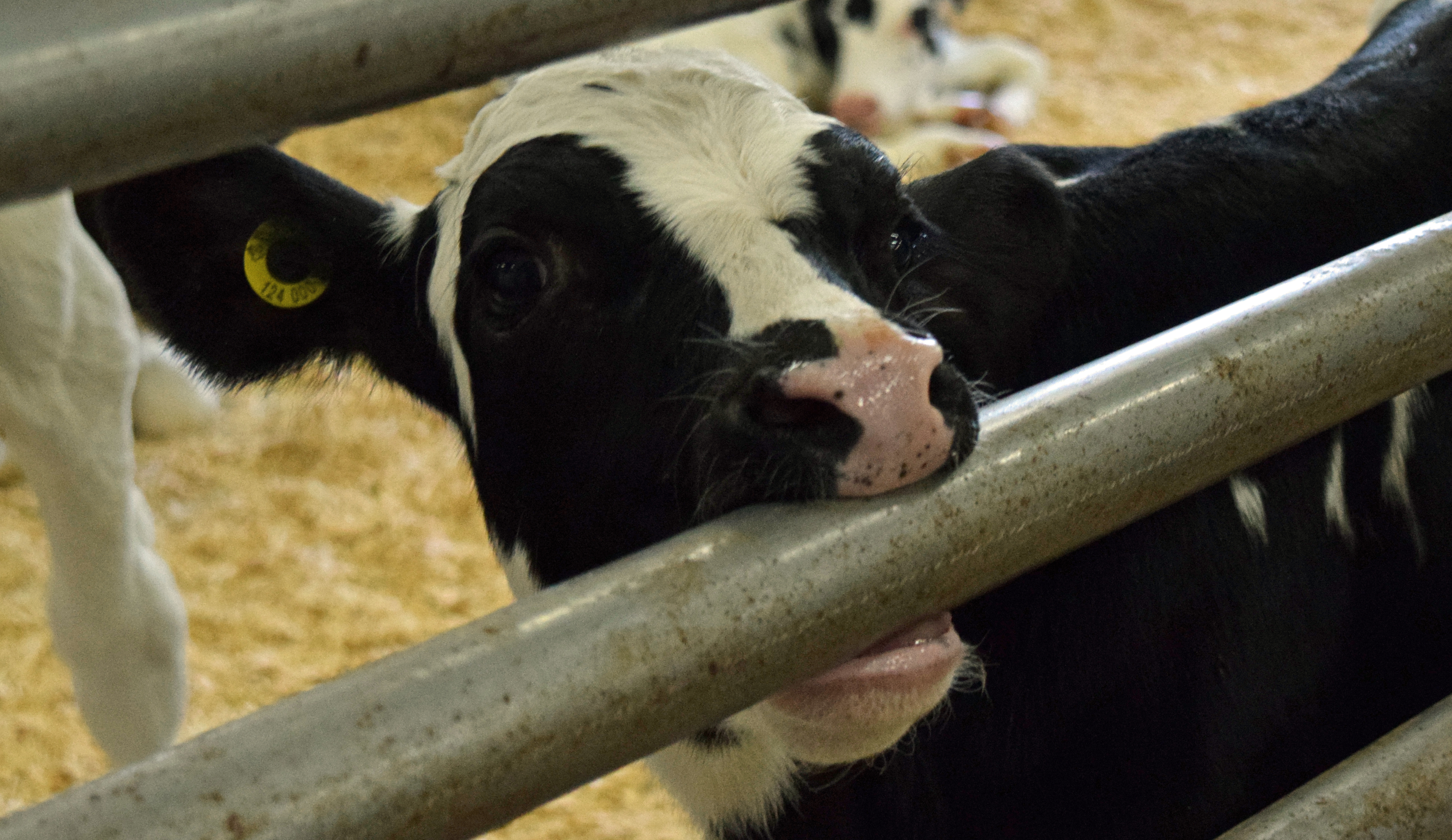Healthy Calf Conference
Follow to stay up-to-date on all Healthy Calf Conference updates. Speaker announcements, sponsorship information, registration announcements, and more.
One of the first goals when feeding calves milk is usually to transition them to drinking from a bucket as soon as possible. It’s no secret that bottle-feeding calves takes more time than bucket-feeding calves. Feeding calves milk or milk replacer from buckets is simple; it is easier to pour milk into a bucket than a bottle, and some find buckets easier to clean than bottles. However, when calves drink milk from buckets rather than sucking milk through a nipple, they are more likely to display abnormal behaviours like nonnutritive sucking (sucking on objects within the pen) or cross-sucking (sucking on other calves.)

Calves sucked by other calves are believed to suffer hair loss and inflammation and studies have proposed that cross-sucking leads to udder damage but none have shown evidence of a direct link. One study found that abscesses developed in almost 40 per cent of calves that were sucked on. These calves also had lower bodyweight at weaning.[1] Further, ears that are wet from cross sucking in cold barns or group hutches could end up with painful frostbite. Finally, producers don’t like to see cross-sucking and it is often a reason producers hesitate to raise calves in groups during the milk-feeding period.
Abnormal behaviours usually indicate animals are experiencing behavioural frustration and, therefore, reduced welfare. Behavioural frustration means the calf wants to display a behaviour, but the environment they are in is preventing them from doing so. For example, if an animal isn’t given food, but is hungry, it may start eating non-food items such as bedding. These abnormal behaviours are a result of the animal responding to its instincts and environment.
If animals display abnormal behaviours, it is important to make changes to the environment or management to reduce these behaviours. In calves, the most common abnormal behaviours involve repetitive sucking on or licking other calves or pen fixtures. Nonnutritive sucking often looks just like a suckling calf – the calf takes something into their mouth and sucks or swallows, sometimes followed by butting (moving the head suddenly upward). Cross-sucking usually occurs on the mouth, ears, navel, tail, and scrotal (bulls) or udder (heifers) areas of other calves.
Note: It is important to know the difference between normal and abnormal behaviour. Self-grooming and grooming other calves or even occasionally licking pen structures is normal behaviour.

All young mammals are motivated to suck. This makes sense, as in nature, a low sucking motivation can put the young’s survival at risk. Even when calves are given plenty of milk from an open bucket, calves continue to look for things to suck. Providing milk via a pail may satisfy the nutritional demands of a calf but it does not allow them to satisfy their innate motivation to suck. Researchers believe this means that sucking isn’t just for getting milk into the calf, but performs other important biological functions as well.
When calves suck, digestive hormones are released that begin nutrient absorption and make calves feel full. Sucking improves esophageal groove closure, directing milk to bypass the rumen and enter the abomasum, where it is digested. Milk that enters the rumen will be fermented. This produces gas that may cause bloat and is also associated with reduced feed efficiency and slowed growth.
The taste of lactose in milk or milk replacer stimulates calves to suck. Therefore, nonnutritive sucking usually increases for about 10 to 15 minutes after calves are fed a milk meal. When calves are fed from a nipple, they may continue to suck the nipple even after all the milk is gone (this is also true for calves fed with automatic milk feeders). For calves fed from an open bucket, they will usually look for something to suck once they finish their milk.
For most calves, once weaned, nonnutritive sucking and cross-sucking stop. However, cross-sucking may persist after weaning in pairs of mutually cross-sucking animals. Typically, if you separate the cross-sucking pair they are unlikely to find another willing recipient of their sucking, so the behaviour will stop. Despite this, producers should aim to prevent nonnutritive sucking from becoming a habit in calves.
Producers should focus on solutions that satisfy calves’ sucking motivation during the milk meal and redirect nonnutritive sucking and cross-sucking to nipples during the pre-weaning period.
Strategies that can help reduce cross-sucking:
If all other strategies fail and there is only one or two calves that are sucking on other calves, identifying them and placing a nose clip to prevent sucking (see photo) or removing them from the group until weaning may be necessary. Consult your herd veterinarian to determine the best course of action for each situation. Nose clips or removing calves from the group do not address the root cause of cross-sucking, and may be frustrating to the calf, resulting in reduced welfare. Preventing cross-sucking through other methods is preferred.
Feeding calves milk through a nipple instead of an open bucket provides advantages for their digestive physiology, health, productivity, and welfare. Allowing bucket-fed calves to suck from dry a nipple after feeding provides some of these advantages.
This project was funded in part through Growing Forward 2 (GF2), a federal-provincial-territorial initiative. The Agricultural Adaptation Council assists in the delivery of GF2 in Ontario.

Follow to stay up-to-date on all Healthy Calf Conference updates. Speaker announcements, sponsorship information, registration announcements, and more.
The Codes of Practice are nationally developed guidelines for the care and handling of farm animals. They serve as our national understanding of animal care requirements and recommended practices.